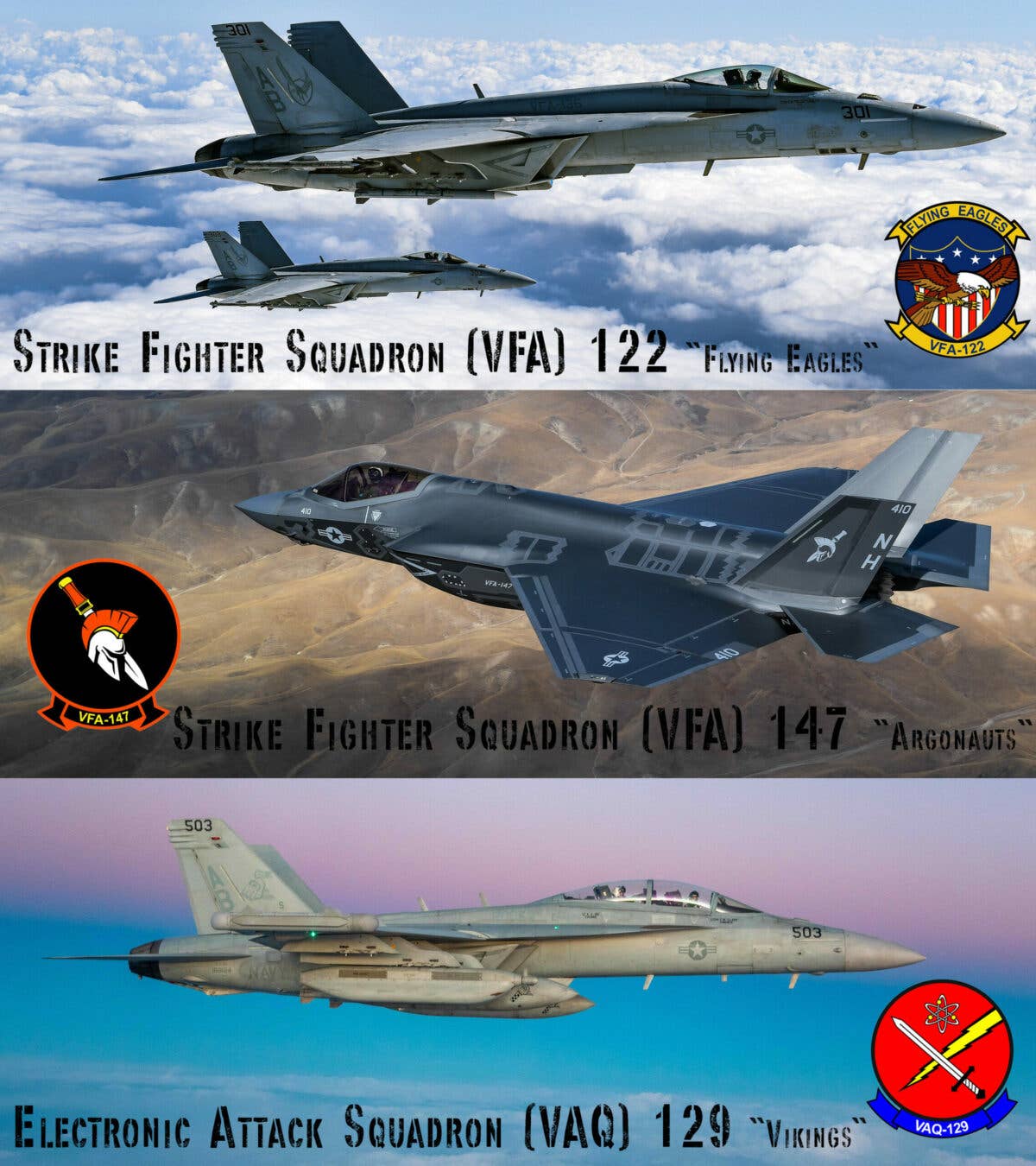Super Bowl LVII: Navy Fighters Flyover Details
The FAA detailed airspace restrictions for Super Bowl LVII, which will be held on February 12 in Glendale, Arizona.

The flyover formation at the Super Bowl LVII will include two F/A-18F Super Hornets, an F-35C Lightning II, and an EA-18G Growler. [Courtesy: U.S. Navy]
Check those NOTAMs carefully if you plan to fly in the vicinity of Glendale, Arizona the week of February 12. It's Super Bowl week, and the Temporary Flight Restrictions (TFR) that accompany the event begin early, as the airspace over downtown Phoenix and State Farm Stadium will be filled with sports enthusiasts and media content creators in the days leading up to Sunday’s game.
This year's aviation highlight of the game is the military flyover at the conclusion of the national anthem. The U.S. Navy will take center stage with an overflight celebrating 50 years of women naval aviators.
Salute to Women Naval Aviators
The flyover formation will include two F/A-18F Super Hornets from the “Flying Eagles” of Strike Fighter Squadron (VFA) 122, an F-35C Lightning II from the "Argonauts" of VFA-147, and an EA-18G Growler from the “Vikings” of Electronic Attack Squadron (VAQ) 129.
According to the Navy, the aircraft selected represent cutting-edge technology of the “Carrier Air Wing of the Future."
The aircraft are stationed at Naval Air Station (NAS) Lemoore, California, and NAS Whidbey Island, Washington will stage out of nearby Luke Air Force Base.
In 1973, the first eight women began flight school in Pensacola, Florida. One year later, six of those eight women, who became known as "The First Six,” earned their Wings of Gold. Since then, women have served, operated, and led at every level of Naval Aviation.
Lt. Katie Martinez, a naval flight officer assigned to VFA-122, said she is looking forward to representing Naval Aviation at one of the world’s most-watched events.
“It’s not a feeling I can even put into words,” Martinez said. “It doesn’t get bigger than the Super Bowl, and I am humbled and honored to be able to participate with my friends and fellow Naval Aviators as part of this once-in-a-lifetime opportunity.”
TFR details
During the Super Bowl, most flights above and in the vicinity of the stadium are not permitted, with certain exceptions. Per the FAA, the only flights permitted during the TFR will be emergency/life-saving flights by medical and law enforcement personnel. They must be coordinated with Phoenix Terminal Radar Approach Control (TRACON).
The NOTAM lists all the activities that are not allowed during the TFR, which includes flight training, practice instrument approaches, aerobatic flight, glider operations, parachute operations, ultralight, hang gliding, balloon operations, agriculture/crop dusting, animal population control flight operations, banner towing operations, sightseeing operations, maintenance test flights, model aircraft operations, model rocketry, utility and pipeline survey operations, and the use of Unmanned Aircraft Systems (UAS), or drones.
No Drone Zone
The TFR for drones begins several days before the game. Beginning February 9 through game day, airspace in downtown Phoenix is restricted up to 1,000 feet from 6 a.m. and midnight daily.
On game day—February 12—restrictions begin at 11 a.m. (MST) within two nautical miles around the stadium and up to 2,000 feet in altitude. The restrictions expand at 3:30 p.m. until 9 p.m. (MST) to a 30-nautical-mile radius and up to 18,000 feet in altitude.
Failure to respect the TFR will cost you, as the FAA notes penalties could include confiscation of the drone, a fine in excess of $30,000, and potential criminal prosecution.

Subscribe to Our Newsletter
Get the latest FLYING stories delivered directly to your inbox






